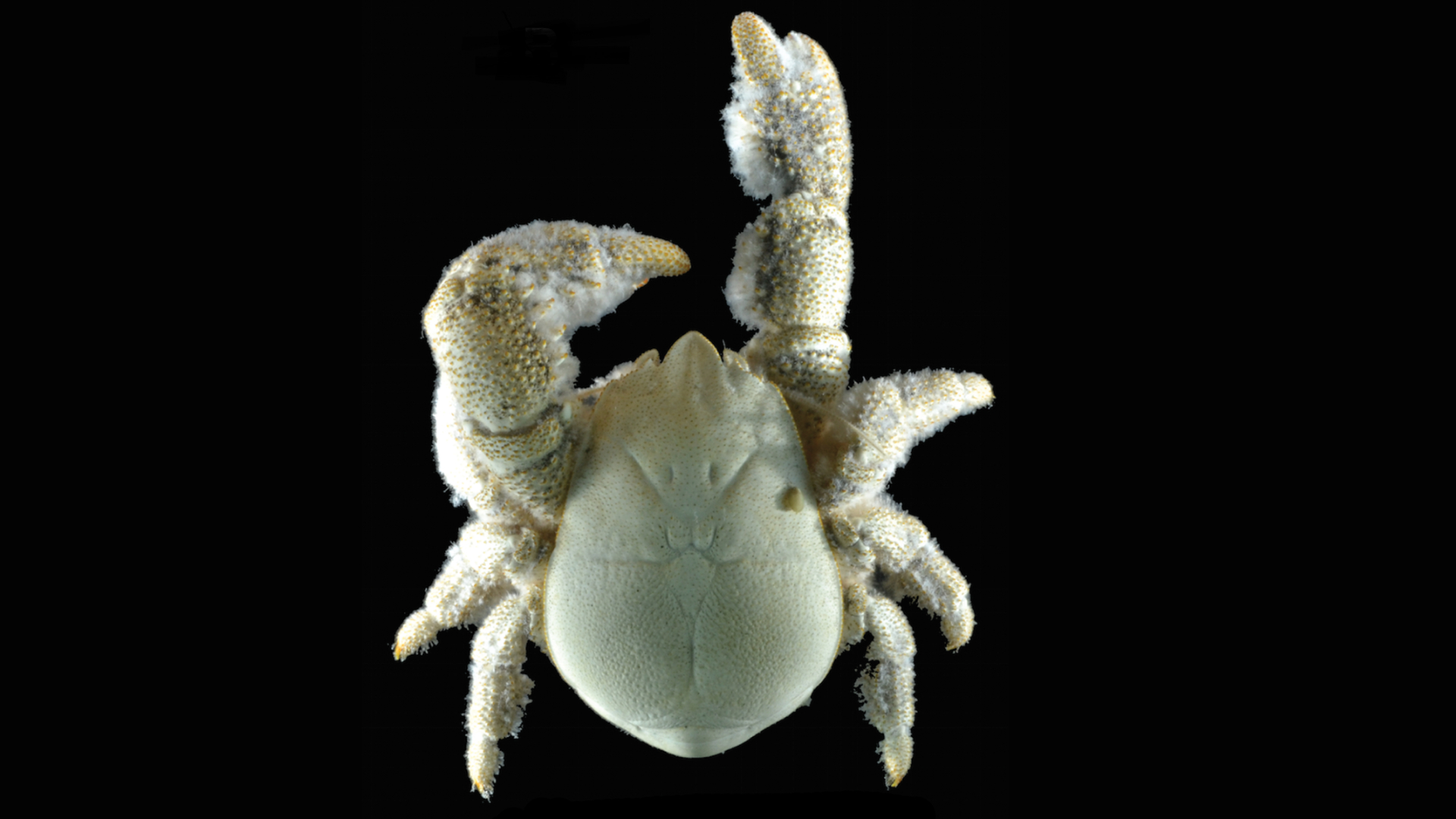Hoff crab: The hairy-chested crustacean that farms bacteria on its hairs
The "yeti" crab is white and hairy, as its nickname suggests, and it thrives in hydrothermal vents in Antarctica's frigid waters.

Name: Hoff crab (Kiwa tyleri)
Where it lives: East Scotia Ridge, Southern Ocean
What it eats: Bacteria
Why it's awesome: It turns out that the Yeti does exist — or at least it does underwater. Named after the abominable snowman, this family of deep-sea squat lobsters was first discovered in 2005. The first example was nicknamed the yeti crab due to the crustacean's white coloration and hairiness. This name was extended to the rest of the family as more species were discovered and described. Later, one hairy-chested species (Kiwa tyleri) was nicknamed "The Hoff" after "Baywatch" actor David Hasselhoff.
But these nicknames are the least-fascinating aspects of this small crustacean. K. tyleri manages to survive in one of the most extreme environments on the planet. In 2010, a remotely operated vehicle dove down to the hydrothermal vents on the East Scotia Ridge in the Southern Ocean and found these yeti crabs densely packed together, with up to 700 individuals per square meter.
Life in these volcanic hydrothermal vents is precarious. The liquid ejected from the vents can reach a scorching 721.04 degrees Fahrenheit (382.8 degrees Celsius), yet not far from the vents, the Antarctic waters are freezing. The crabs must survive in the small area between the two extremes.
Related: The amazing world of Antarctic yeti crabs
Sign up for the Live Science daily newsletter now
Get the world’s most fascinating discoveries delivered straight to your inbox.
Scientists discovered that females with well-developed embryos venture away from the vents. The scalding waters of the hydrothermal vents may not be hospitable for embryonic development, so the females move away and release their larvae into cooler waters. This journey into the cold has a visibly damaging effect on the females, which breed only once before dying.
And what is there to eat in a hydrothermal vent? Not much. But the Hoff crab has found a way to snag grub, and it involves the animal's hairs, known as setae. These setae, which cover the crab's entire belly, harbor bacteria that the crab harvests and eats.
Although they are called yeti crabs, these critters aren't actually true crabs. Instead, they are squat lobsters, and like a number of other decapods, such as king crabs and hermit crabs, they are crab-like. This strange process whereby many different animals end up looking like crabs is a type of convergent evolution known as carcinization.

Megan Shersby is a naturalist, wildlife writer and content creator. After graduating from Aberystwyth University with a BSc (Hons) degree in Animal Science, she has worked in nature communications and the conservation sector for a variety of organisations and charities, including BBC Wildlife magazine, the National Trust, two of the Wildlife Trusts and the Field Studies Council. She has bylines in the Seasons anthologies published by the Wildlife Trusts, Into The Red published by the BTO, and has written for the BBC Countryfile magazine and website, and produced podcast episodes for its award-winning podcast, The Plodcast.










